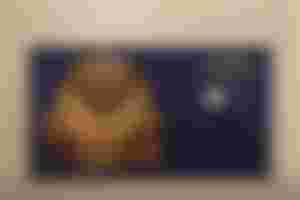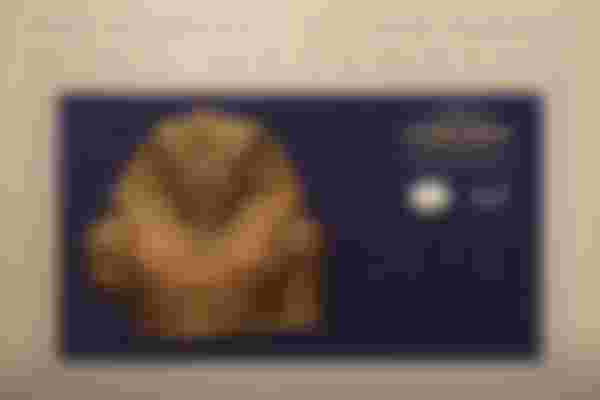After the eyes of the whole world turned to Egypt for 6 days to continue the attempts to float the giant ship (Ever given) that was Closed down the Suez Canal completely... And after the Egyptians succeeded in floating it without any losses and with innovative methods that surprised the specialists in the whole world...

All eyes will return to Egypt tomorrow, but this time to see a legendary procession of royal mummies from the Egyptian Museum at Tahrir, in a majestic procession befitting the greatness of the ancient pharaohs, numbering 22 royal mummies, dating back to the dynastic ages of 17, 18, 19, 20, including 18 mummies of kings and 4 Mummies of queens, including the mummy of King Ramses II, King Seqnen Ra, King Tuthmosis III, King Seti I, Queen Hatshepsut, Queen Mert Amun, wife of King Amenhotep the First, and Queen Ahmose Nefertari.
Dr. Khaled Al-Anani, Minister of Tourism and Antiquities, announced that 400 TV channels will broadcast live the ceremony of transferring royal mummies from the Egyptian Museum to the National Museum of Civilization.

The Egyptian Museum in Tahrir closes its doors tomorrow in preparation for the majestic procession!
The Tahrir Museum, the most famous, important, and oldest museum of antiquities in Egypt, located in Tahrir Square in the Egyptian capital, Cairo, announced that it will close its doors to visitors exceptionally tomorrow, Saturday, in preparation for the transfer of royal mummies in the majestic procession from the Egyptian Museum to the National Museum of Egyptian Civilization in Fustat.
Work in the museum was extended on Friday until seven in the evening instead of five in order to provide the opportunity for the largest number of visitors.
The Egyptian Museum in Tahrir will return to work normally on Sunday, April 4, according to the regular opening and closing dates.

Official Museum of Civilization page and online ticketing platform
In preparation for this legendary event, the Egyptian Ministry of Tourism and Antiquities launches an official page of the National Museum of Egyptian Civilization and an online ticketing platform.
The new museum displays the various aspects of Egyptian civilization throughout the ages, from prehistoric times to modern times.

The page shows a number of the most important archaeological techniques displayed in the museum, which express the different eras, where the visitor of the page can wander the center of the museum and learn about its contents, which vary between museum exhibition halls, antiquities restoration centers, and entertainment places that include restaurants, cafeterias, and bazaars for the sale of archaeological reproductions.
As well through the page, the visitor can online reservation of tickets to enter the museum at the time he wants.

Meet four kings whose mummies will leave the Egyptian Museum in Tahrir for the National Museum of Egyptian Civilization
The mummy of the kings of Siti I, his son Ramses II, Merneptah, and his son Siti II will be among the 22 royal mummies that will be transferred from the Egyptian Museum in Tahrir to the National Museum of Egyptian Civilization in Fustat in a majestic.

King Seti the First
The mummy of King Seti I was found in 1881 in the Deir al-Bahari cache, west of Luxor, and the age of King Seti the First was estimated at his death in his forties.
King Seti the First is the son of King Ramses I, the founder of the nineteenth dynasty, the era of the modern state, and he ruled Egypt for at least twenty-one years and led military campaigns to re-impose Egyptian control abroad. He also led a battle against the Hittites, and these military victories were recorded at the Temple of Amun at Karnak.
The tomb of King Seti the First in the Valley of the Kings (KV17) is one of the most beautiful royal tombs, as its walls keep their bright colors. His main wife was Queen Toya and the couple had three sons, one of whom is King Ramses II, his successor to rule.

King Ramses II
The mummy of King Ramses II, son of King Siti the First, was found in 1881 in the Deir el-Bahri cache, west of Luxor, and examinations of the mummy indicated that he died at the age of ninety.
King Ramses II is considered the most famous king of the modern state and one of the greatest warriors of Egypt, as he succeeded his father, King Siti the First, and became king between twenty-three and twenty-five years of age, and enjoyed a long reign of about sixty-seven years, and left a large number of monuments and inscriptions.
King Ramses II is the owner of the first known peace treaty in history with the king of the Hittites, which is recorded on the walls of the temples of Karnak, as he recorded the events of the battle of (Kadesh) - which took place in the fifth year of his rule against the Kingdom of the Hittites - on multiple effects.
King Ramses II built temples all over Egypt, and among his most famous construction projects is the temple of Abu Simbel and Ramesseum - dedicated to his funerary worship, and his main wife was the great Queen Nefertari, who built a temple for her near his temple in Abu Simbel, and her tomb in the Valley of the Queens is the most beautiful cemetery in the cemetery Kind.

King Merenptah
King Merenptah is the thirteenth son of King Ramses II, from the era of the modern state, the nineteenth family, and as a result of the long reign of his father, he ascended the throne at an old age, ruled for eleven years, and participated in a number of military campaigns. The archaeological one (Victory Panel).
The king's mummy was found in 1898 in the tomb of Amenhotep II (KV 35) in the Valley of the Kings in Luxor, studies revealed that he died at the age of about sixty years.

King Seti II
King Seti II is the son of King Merenptah, and he is considered the fifth king of the Nineteenth Dynasty of the New Kingdom, and he ruled for nearly six years.
The mummy of King Seti II was found in 1898 in the tomb of Amenhotep II (KV 35) in the Valley of the Kings in Luxor, inside many coils of distinctive fine linen, and the features of the face of King Seti II were well preserved, and small amulets of faience were also found on Strings wrapped around the bottom of the mummy.
Watch the unrivaled Pharaohs’ Golden Parade live on:








